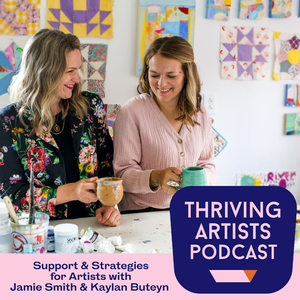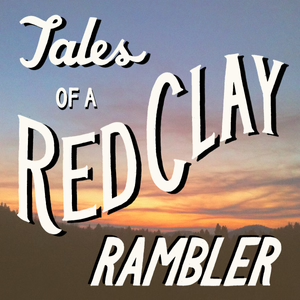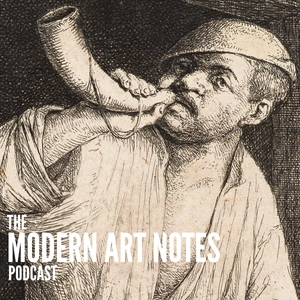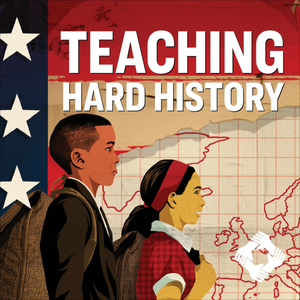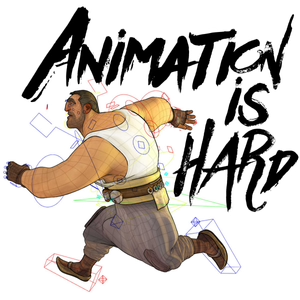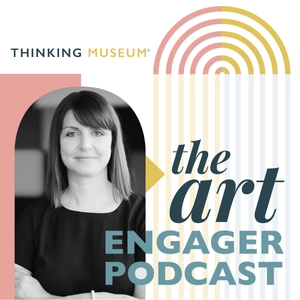
How to enjoy art (without knowing anything about it) with Ben Street
11/10/22 • 44 min
1 Listener
Today I’m chatting to Ben Street about his new book 'How to Enjoy Art: A Guide for Everyone'. We’re talking about how we can enjoy art without needing to know anything about it.
Ben Street is an author, educator and art historian. He’s also been a school teacher and museum educator. He’s a writer of interpretation for museums and exhibitions and a writer of art criticism. He’s an academic and he writes books - “How to Enjoy Art: A Guide for Everyone” (Yale) and “How to be an Art Rebel” (Thames and Hudson) are out now.
In our chat today, we talk about the values that guide Ben’s work and how he’s passionate about us all being able to enjoy art without needing any specialist knowledge.
We talk about slow looking and open questioning and how we can approach art with the tools we already have within us.
We focus on why looking is so important to the art experience, we explore ways in which we can look for longer and we talk about how scale and space affects how we relate to art.
We discuss why we rarely feel we need to read about a piece of music before we listen to it, but with art, we feel we need to know something about it to look at it. And that artworks come ‘wrapped in text’ before we can even get to them. Why is this? How has this come about?
This chat is jam-packed with ideas and inspiration for you. Here’s my chat with Ben. Enjoy!
LINKS
Join the Slow Looking Club Community on Facebook
Ben Street -
Books - How to Enjoy Art; How to be an Art Rebel
Today I’m chatting to Ben Street about his new book 'How to Enjoy Art: A Guide for Everyone'. We’re talking about how we can enjoy art without needing to know anything about it.
Ben Street is an author, educator and art historian. He’s also been a school teacher and museum educator. He’s a writer of interpretation for museums and exhibitions and a writer of art criticism. He’s an academic and he writes books - “How to Enjoy Art: A Guide for Everyone” (Yale) and “How to be an Art Rebel” (Thames and Hudson) are out now.
In our chat today, we talk about the values that guide Ben’s work and how he’s passionate about us all being able to enjoy art without needing any specialist knowledge.
We talk about slow looking and open questioning and how we can approach art with the tools we already have within us.
We focus on why looking is so important to the art experience, we explore ways in which we can look for longer and we talk about how scale and space affects how we relate to art.
We discuss why we rarely feel we need to read about a piece of music before we listen to it, but with art, we feel we need to know something about it to look at it. And that artworks come ‘wrapped in text’ before we can even get to them. Why is this? How has this come about?
This chat is jam-packed with ideas and inspiration for you. Here’s my chat with Ben. Enjoy!
LINKS
Join the Slow Looking Club Community on Facebook
Ben Street -
Books - How to Enjoy Art; How to be an Art Rebel
Previous Episode

How to talk about climate activist protests in art museums
Today’s episode follows on from a popular post I wrote on social media recently about how to talk about the recent climate activist protests in art museums with your participants. I wanted to take the opportunity to explore the subject in a bit more detail here.
Art has been hitting the headlines recently with numerous climate activist protests targeting famous paintings in museums - from Van Gogh’s 'Sunflowers' in the National Gallery in London, to Monet’s 'Grainstacks' in Potsdam and Vermeer's 'Girl with a Pearl Earring' in the Mauritshuis in The Hague.
Now, whatever your views about these attacks - and I’m acknowledging here that there are very passionate views on all sides - as educators, how we respond is equally important.
Whether you’re working with groups in the museum or with students in a classroom, people will mention recent events and will want to talk about it. They may even ask you for your opinions
So, in today's episode we'll explore how these events are an opportunity to engage in perspective-taking and discussion with visitors, rather than voicing our own opinions.
It means listening to a range of perspectives and keeping an open mind, creating discussion with visitors and inviting them to explore and even understand the different perspectives involved.
But, importantly, you have to feel comfortable creating conversations about contentious issues such as these and know that you will be able to facilitate objectively.
So, first I’ll talk about the kinds of discussions you could facilitate around this subject and will share a range of thinking routines and questions that you can use to create conversations.
And secondly, I’ll take you through a super-useful exercise that will help you to get to know yourself and your feelings better - this is an exercise that will ultimately help you to facilitate subjects around all kinds of sensitive and contentious topics.
There are lots of resources associated with today's episode too, including a free PDF summary sheet - and I've shared all the helpful links below.
LINKS
Download the summary sheet of today's episode - Resources for talking about contentious issues (free PDF)
6 thinking routines for perspective-taking (free PDF)
Episode 11 Step Inside: Thinking Routines to Foster Perspective-Taking
Episode 43 Tips for facilitating meaningful discussions around sensitive subjects
Join the Slow Looking Club Community on Facebook
Next Episode

How to Look at Art (Slowly)
We’ve reached another milestone and in honour of 75 episodes, I’m releasing a new FREE resource today.
How to Look at Art (Slowly) shares 30+ different ways that you can look at art or objects in museums.
In today’s special episode I’m talking you through some of these different ways of looking slowly.
I'll share why it's important to slow down and look carefully, before explaining the 4 sections of the guide: Static Looking, Movement, Observation by Drawing, Observation by Writing and Viewfinders.
How to Look at Art (Slowly) is a resource that can be used by anyone.
Whether you’re going to a museum alone and would like some strategies for looking, or if you’re visiting with a friend and are on the lookout for some new ways to engage with what you’re seeing.
Likewise, if you’re an educator or guide, you can use these activities with your groups. All of the activities are coded as either solo or group activities.
These simple activities offer a framework and tools for looking at art and objects for longer.
Choose a variety of different ways to look as you move around the museum. You may want to choose activities that appeal to you or you might want to step out of your comfort zone and try something new. All of the activities will help you to see more.
Download this free guide via the link below and then listen to the episode!
LINKS
HOW TO LOOK AT ART (SLOWLY) - a free guide for looking with 30+ activities!
Join the Slow Looking Club Community on Facebook
If you like this episode you’ll love
Episode Comments
Generate a badge
Get a badge for your website that links back to this episode
<a href="https://goodpods.com/podcasts/the-art-engager-245896/how-to-enjoy-art-without-knowing-anything-about-it-with-ben-street-27871601"> <img src="https://storage.googleapis.com/goodpods-images-bucket/badges/generic-badge-1.svg" alt="listen to how to enjoy art (without knowing anything about it) with ben street on goodpods" style="width: 225px" /> </a>
Copy
